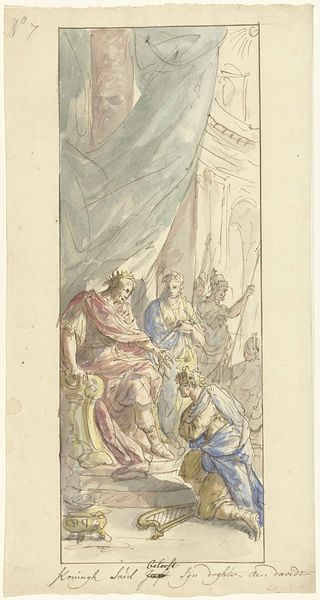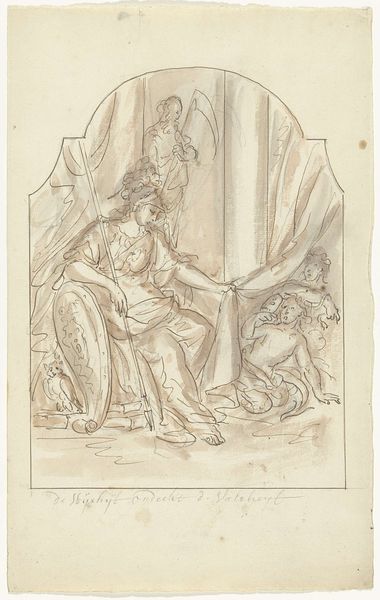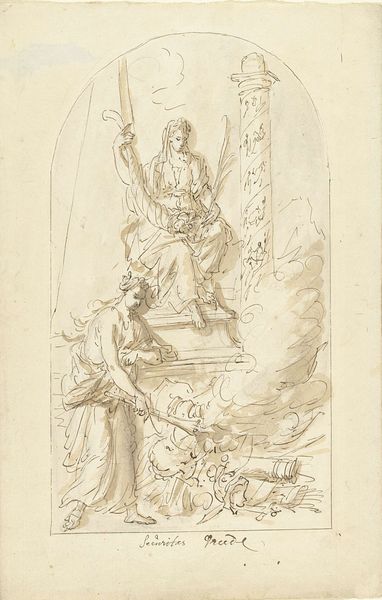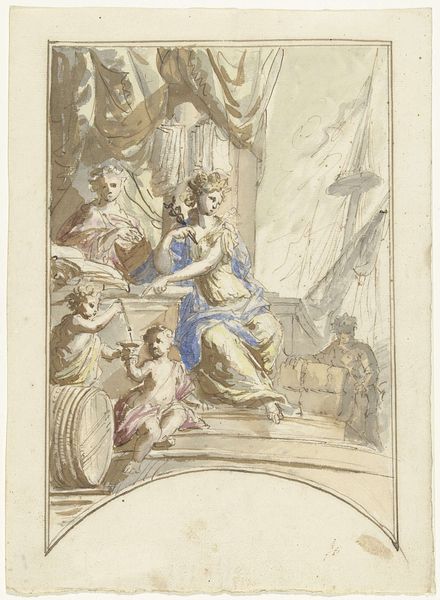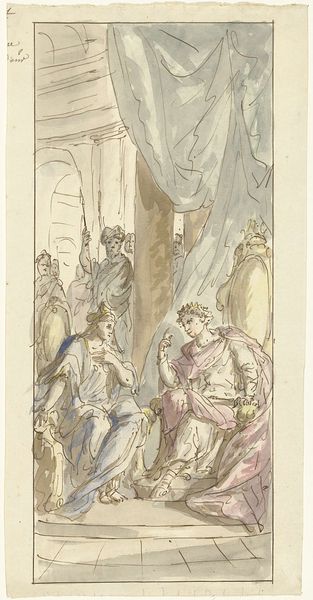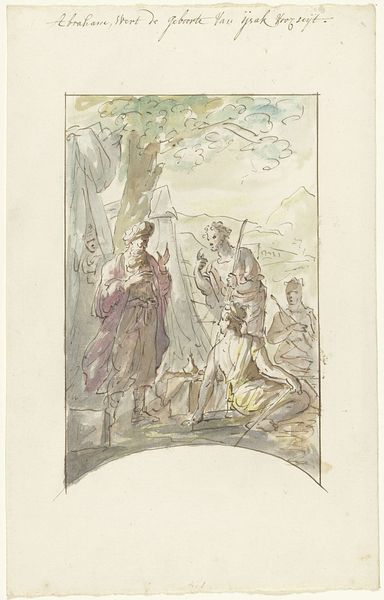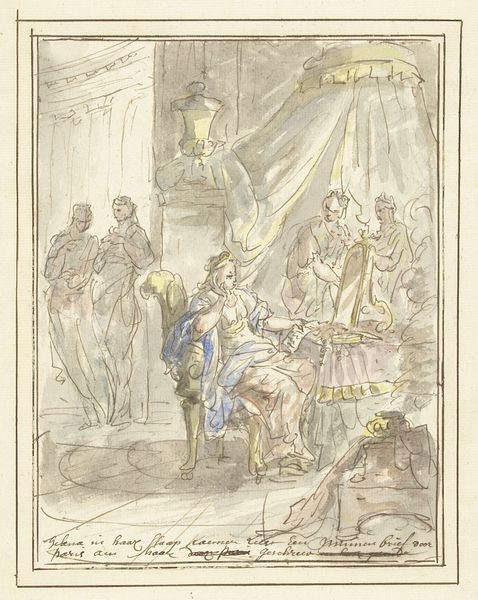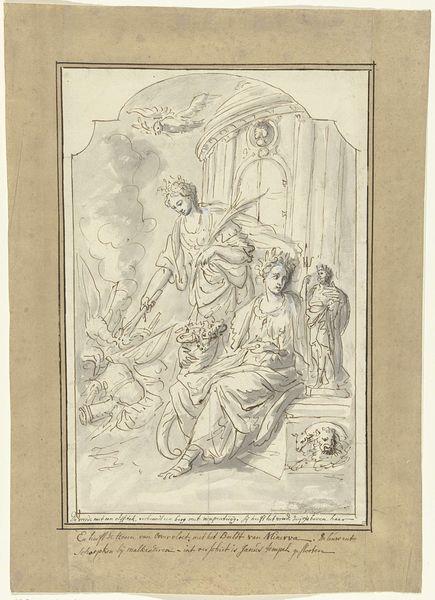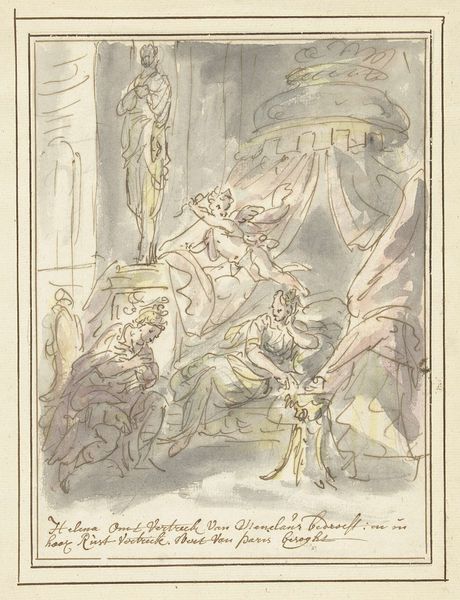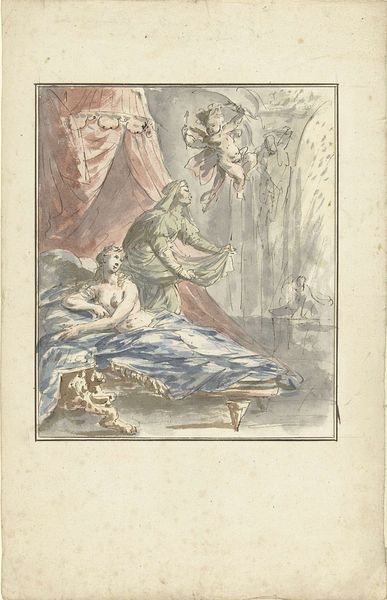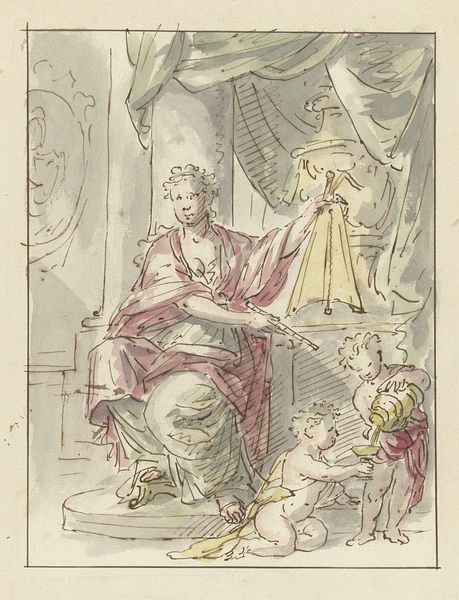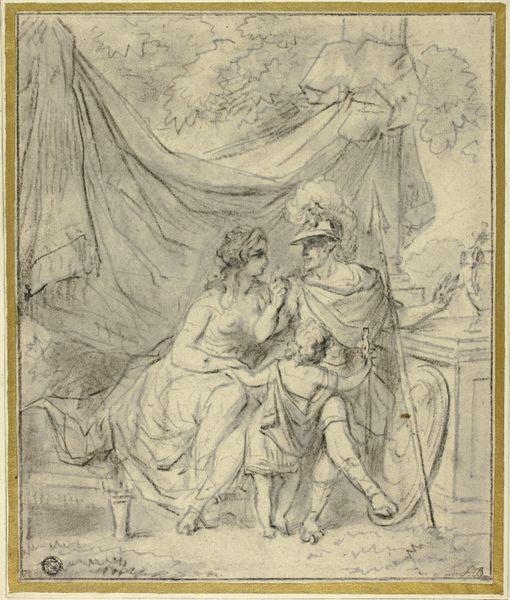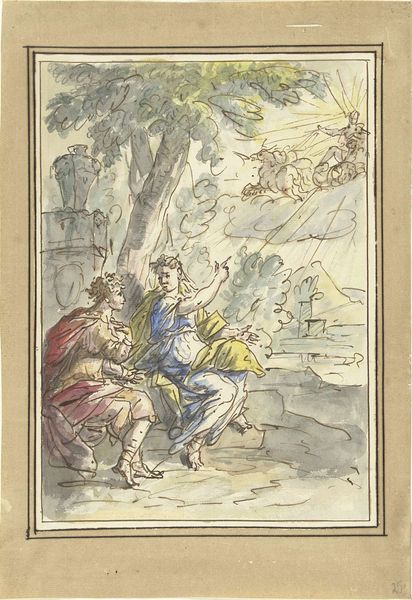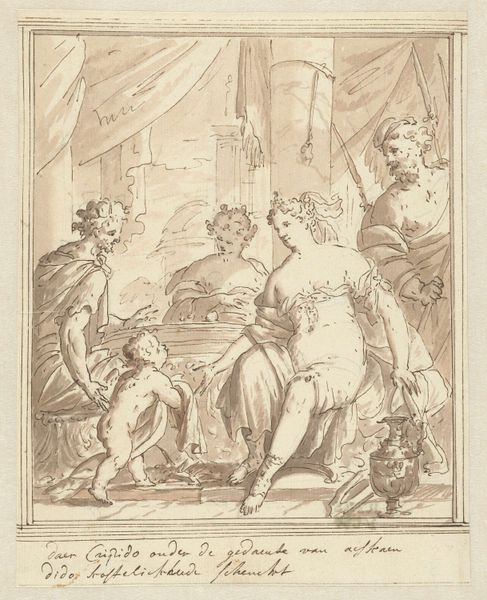
Allegorie op het matig gebruik van de Overvloed en een allegorie van het Vrolijk Genoegen 1677 - 1755
0:00
0:00
drawing, watercolor, ink
#
drawing
#
allegory
#
baroque
#
figuration
#
watercolor
#
ink
#
genre-painting
Dimensions: height 330 mm, width 212 mm
Copyright: Rijks Museum: Open Domain
Curator: Here we have "Allegory on the Moderate Use of Abundance and an Allegory of Merry Company," a drawing by Elias van Nijmegen dating sometime between 1677 and 1755. What strikes you about this piece initially? Editor: It's quite loose, almost like a preparatory sketch. The washes of ink and watercolor give it an ethereal, dreamlike quality, despite the classical subject matter. I’m particularly interested in the prominent placement of cornucopia in the composition, it suggests a conversation around availability and means of access. Curator: It's true; Nijmegen uses allegorical figures common in the Baroque period. Looking closer, one can consider these representations through a feminist lens. The prominent figure, possibly Abundance herself, possesses a grounded, almost maternal energy as she engages with other figures, conveying more than simple excess, but ideas of societal and domestic influence as well. Editor: That's a really interesting reading! I’m looking at how he employed ink and watercolor to articulate forms and establish hierarchies, it’s so simple but efficient. Do you see the cascading fruit and leaves spilling from the cornucopia, suggesting a surplus of natural resources? Curator: Definitely. This depiction touches upon consumption as a gendered social performance. We could interpret these allegories through modern ideas regarding the domestic sphere, as historically the abundance of household supplies was strongly related to women’s access to social and economic standing. The drawing prompts a wider commentary on what it means to have enough within different social systems. Editor: And there's also this contrast between the loose handling of the upper scene and the more defined, graphic quality of the lower vignette. The juxtaposition sparks conversations about what processes result in “precious” or more formally “complete” artworks versus casual preliminary pieces that also involve material availability. Curator: The material process contributes significantly to the broader narrative on societal roles and representation within Baroque society. Thinking critically, it poses key considerations for feminist theory when discussing art of that era, especially considering how women artists and their perspectives were marginalized. Editor: Absolutely. The availability and distribution of artmaking materials like costly pigments certainly influenced what narratives and whose vision of those narratives persisted. This makes one consider accessibility, agency, and representation across diverse making practices in that moment in time. Thanks for bringing that dimension to light. Curator: Of course. It’s crucial that we examine such historical artworks, especially these types of allegories, with modern awareness around societal structures, to allow richer consideration about Baroque society’s influences on present day power dynamics.
Comments
No comments
Be the first to comment and join the conversation on the ultimate creative platform.
